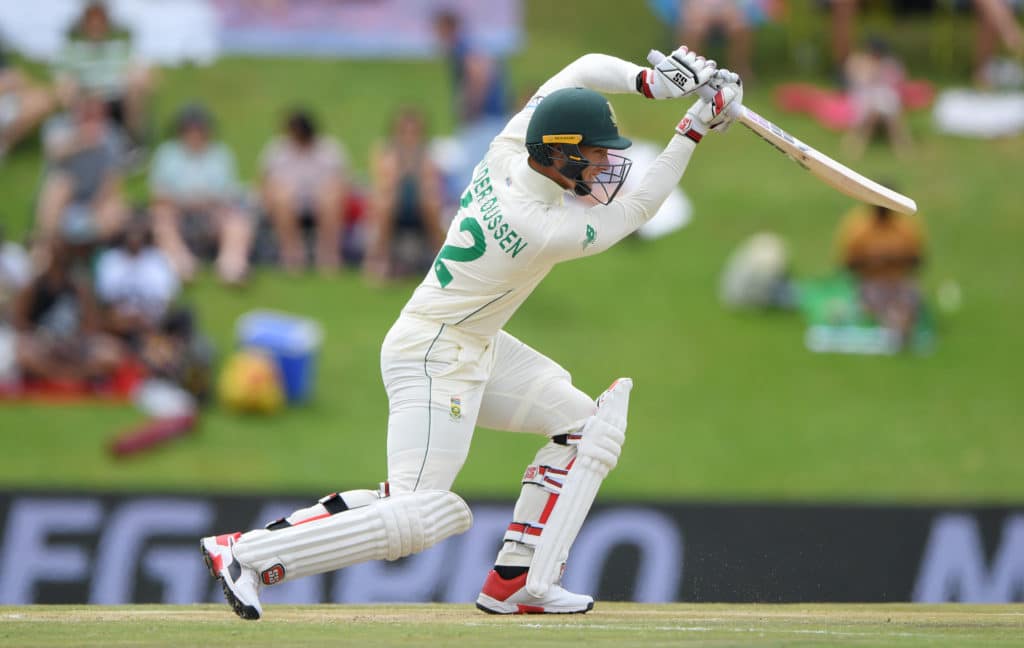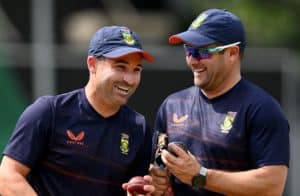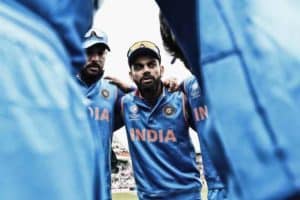A gutsy partnership in St Lucia suggests a fighting spirit is brewing, but the Proteas’ batting inconsistency remains the biggest threat to their ascension in the Test rankings, writes RYAN VREDE.
This started as a piece lamenting yet another batting collapse, and worrying analysis of their batting performances since December 2019 (the start of Mark Boucher’s tenure). Yet, halfway through it, the complexion of the Test changed dramatically, thanks to a 70-run partnership between Rassie van der Dussen and Kagiso Rabada.
That salvaged what a dire situation at 73-7. The Proteas’ lead was well short of what they would have been comfortable with at that point, and it is a credit to the character and application of the duo that they got their side into a position where they are favourites to win.
These sorts of recoveries defined elite Test sides, and it indicates the birth of a fighting spirit that has been painfully absent to date.
However, the partnership only plastered over what was an average batting performance, the likes of which has become too commonplace recently. This needs to be addressed as a matter of urgency.
At the start of the tour, newly appointed Test skipper Dean Elgar signalled an awareness of this batting issue when assessing what the Proteas needed to do to arrest their slide down the Test rankings.
‘We’ve always had a batting lineup that has scored heavily. And fast bowlers. That’s the South African way,’ Elgar said. ‘We need to get back to scoring big hundreds and taking five-fors like it used to be.’
The Proteas bowlers started this new era strongly, driving the team to victory in the first Test against the West Indies. They’ll carry the weight of responsibility for winning the series, after a batting performance that had them dismissed for 174.
These batting struggles have shown some signs of being resolved in the period in question. There have been strong performances from individuals, but a team contribution is still missing.
Since the start of Boucher’s tenure (18 innings) they’ve scored over 300 just thrice. Two of these 300-plus scores came against a Sri Lanka bowling unit crippled by injury. The breakdown of the remainder of the team batting totals reads: 0-99 runs: 1 (chased 67 to win without losing a wicket), 100-149 runs: 0, 150-199 runs: 2, 200-249 runs: 7, 250-299 runs: 5.
England are the highest-ranked team they played against during this period. They are stacked with world-class bowlers. However, outside the West Indies’ Jason Holder (9th), the Proteas’ other opponents featured no bowlers in the top-10 Test bowling rankings.
It is also notable that since December 2019, only Afghanistan have recorded fewer Test hundreds (two in two matches) than South Africa (four in 10 Tests).
It is self-evident that the Proteas’ problems run deep. Worryingly, they are widespread.
As a start, the opening pair of Aiden Markram and Dean Elgar are statistically awful. Across 47 innings as a pair they average 32, which is plainly not good enough for batsmen of their immense individual talents.
This has put pressure on those who follow, and considering that a couple of rookies have been trialed at No 3 (first Rassie van der Dussen and most recently Keegan Petersen), this hasn’t been ideal. Van der Dussen was central to the Proteas’ recovery in the second innings in St Lucia, but overall he has struggled to replicate his white-ball excellence on the Test stage. Petersen has exhibited familiar struggles of many Test newbies. His competency will be revealed in time.
Faf du Plessis’ retirement has compounded the team’s problems, robbing the middle order of a truly world-class batter. The team’s other X-factor talent, Quinton de Kock, came into the West Indies series averaging 25 in his preceding 10 innings.
His century in the first Test was followed up by a wonderful 96 in the first innings of the second, which eased some concerns and, if his form sustains (notwithstanding a duck in the second innings), solves a massive problem for the Proteas’ lower middle order.
An unsolved and ever-growing concern is the absence of a dependable all-rounder at No 7. Wiaan Mulder has high potential, but he averages 19 after seven innings, which is a poor reflection of his ability. At 23, Mulder has time to make technical and mental adjustments, but Test cricket shouldn’t ever be a place to nurture talent. He needs to deliver or build his game in domestic four-day cricket.
Rabada’s contribution this past Sunday broke a barren spell of contributions from the tail. The top Test sides in the world are able to squeeze some runs out of their bowlers. In the last 17 innings, the Proteas bottom-three batters have contributed 370 runs at a collective average touching 22.
It should never be the bowlers’ primary responsibility to help solve batting challenges, but in Rabada and Maharaj, the Proteas have two tailenders who are better than their averages of 12 and 14, respectively, suggest. In a format where the likes of India, New Zealand, England and Australia bat deep, the Proteas coaching staff has to invest time and expertise in growing the competency of the aforementioned duo.
Encouragingly, there is more room for growth in the highlighted issues than there is reason for despair. This is a team that suddenly feels like their trajectory is curving upwards. If they can remedy their batting challenges, that graph will continue to track up.





